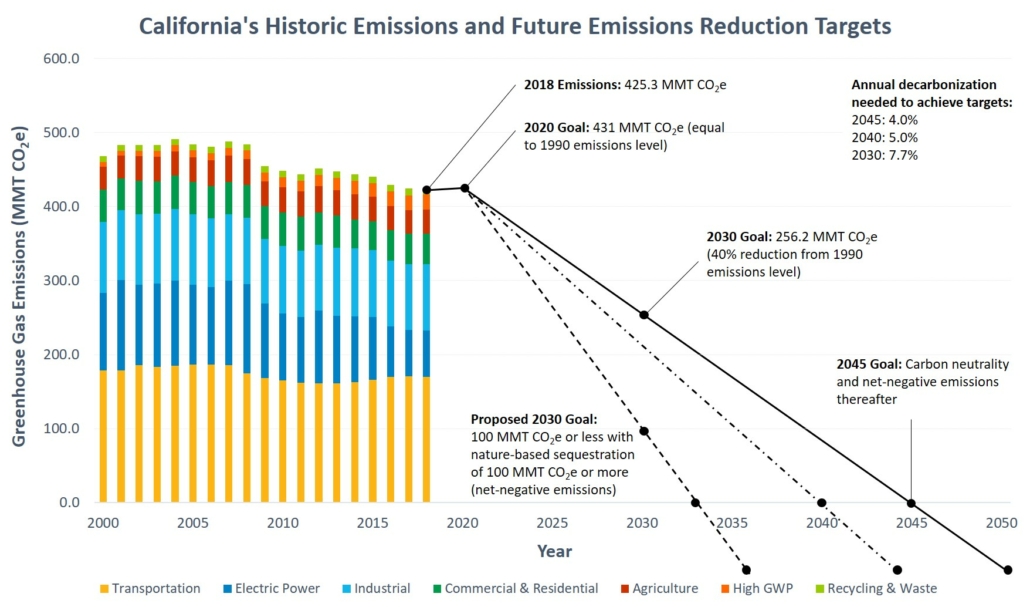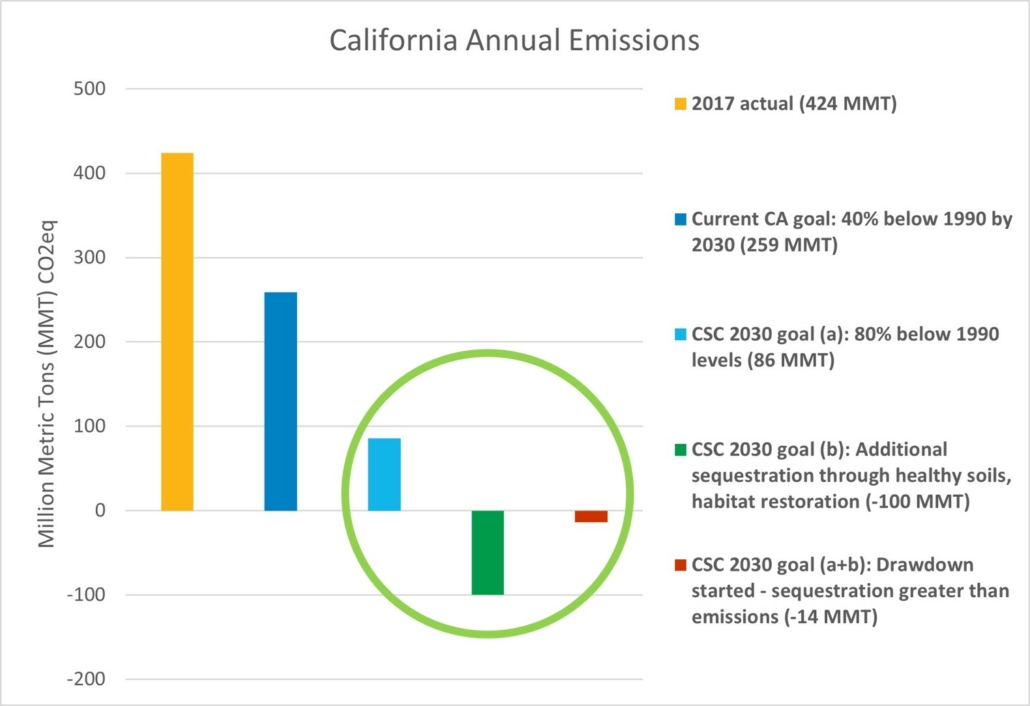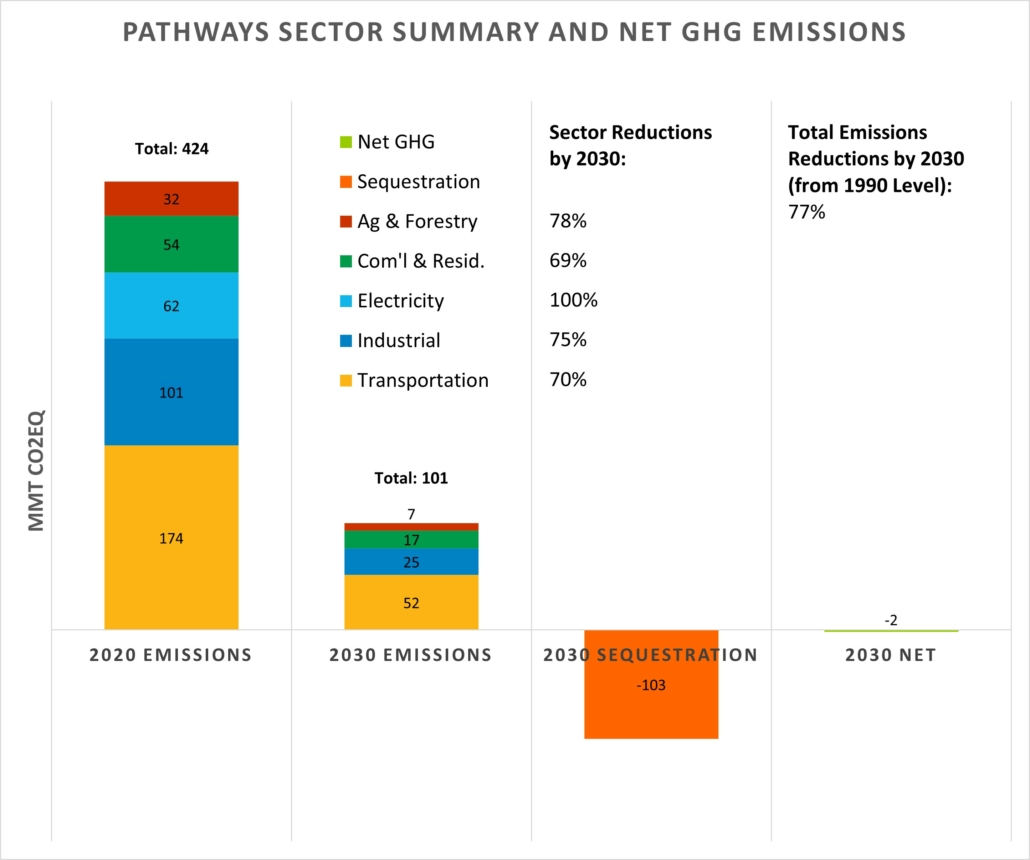Climate Safe California calls for deep and rapid cuts in statewide greenhouse gas (GHG) emissions. The most current climate science shows that the atmosphere is warming at a rate faster than even the Intergovernmental Panel on Climate Change anticipated. This means we must accelerate California’s climate goals to comply with the science and reestablish the state as a global climate leader. Currently, the state goal is to reach carbon neutrality (an even balance of GHG emissions and removal) by 2045. This is too slow. Climate-Safe California calls on policymakers to accelerate that goal by 15 years – a steep, but necessary, drop in emissions.
The Climate Center worked with several prominent California-based scholars and climate policy experts to publish the below results in an online report. Read the key findings of Kammen et al here.
For an explanation of our model scenario pathways for California to become carbon negative by 2030, click here.

At present, California’s official goal is to reduce emissions by 40% below 1990 levels by 2030. The Climate Center wants to roughly double that goal – we are calling for an approximately 80% reduction in 1990 emissions by 2030. This would cut our annual emissions from over 400 MMT CO2e to less than 100 MMT CO2e. This would be balanced by nature-based carbon sequestration of ~100 MMT CO2e per year. In total, this leads to net-negative emissions (where more GHGs are removed from the atmosphere than are emitted into it) by 2030.

To take our analysis a step further, we asked a consultant to build us a California climate model. We worked in this model to manipulate each emissions sector and determine specific scenarios that would meet our climate goals. The image below represents one pathway to net-negative emissions by 2030. We created this pathway by assuming sizable reductions in vehicle miles traveled, increased renewable energy deployment, the electrification of most buildings and light-duty vehicles, and other climate-safe shifts. In total, it calls for a 77% reduction of 1990 emissions levels by 2030 balanced by carbon sequestration in natural systems.

The model we used to create this net-negative scenario is available here. This Excel file includes orientation text and information on how to use the model. Users can manipulate emissions in each sector and view the impact these changes have on 2030 emissions projections. Any questions relating to the Pathways model can be emailed to pathways@theclimatecenter.org.